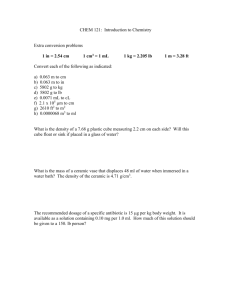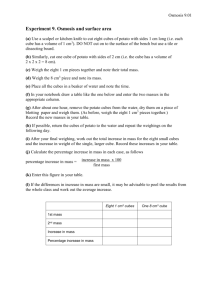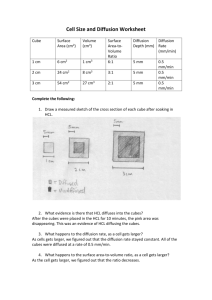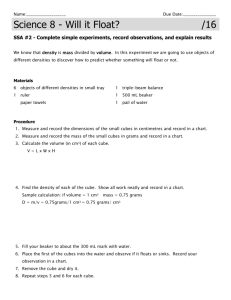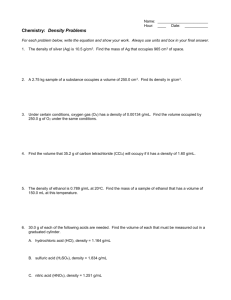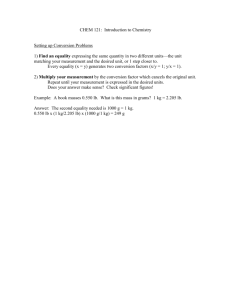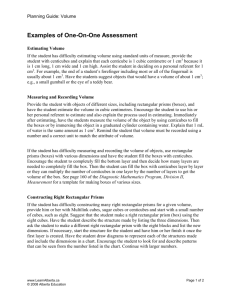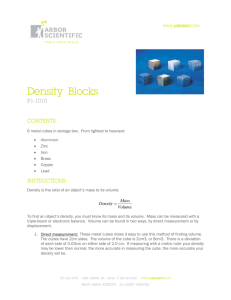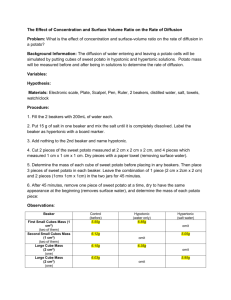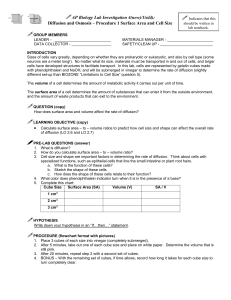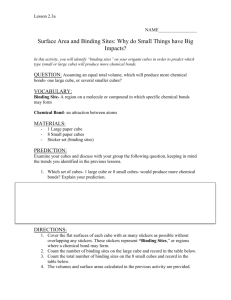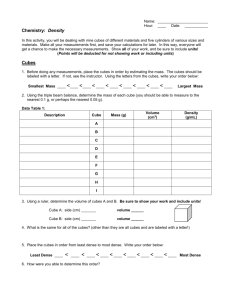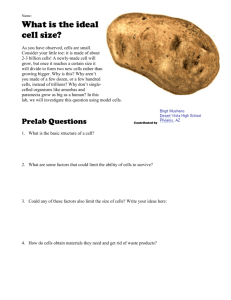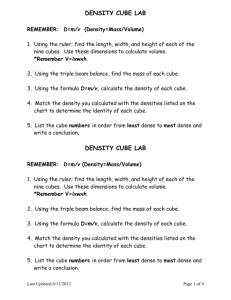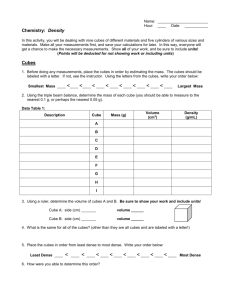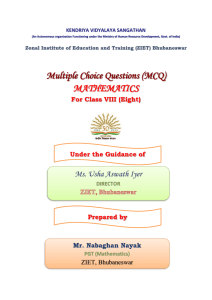doc
advertisement
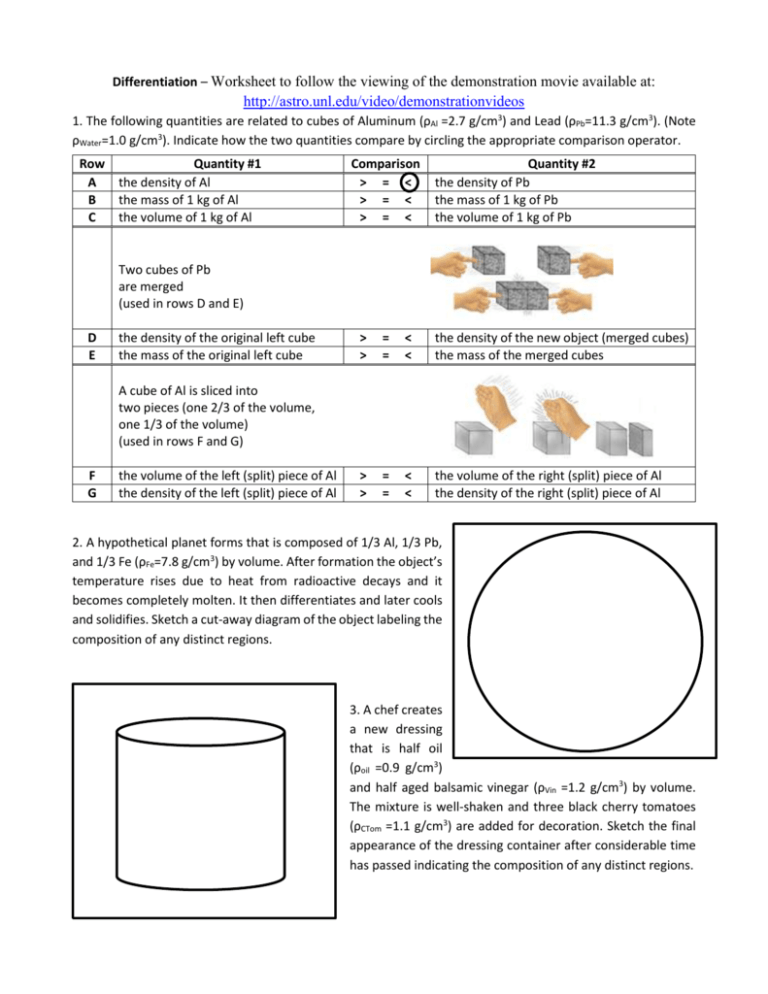
Differentiation – Worksheet to follow the viewing of the demonstration movie available at: http://astro.unl.edu/video/demonstrationvideos 1. The following quantities are related to cubes of Aluminum (ρAl =2.7 g/cm3) and Lead (ρPb=11.3 g/cm3). (Note ρWater=1.0 g/cm3). Indicate how the two quantities compare by circling the appropriate comparison operator. Row Quantity #1 A the density of Al B the mass of 1 kg of Al C the volume of 1 kg of Al Comparison > = < > = < > = < Quantity #2 the density of Pb the mass of 1 kg of Pb the volume of 1 kg of Pb Two cubes of Pb are merged (used in rows D and E) D E the density of the original left cube the mass of the original left cube > > = = < < the density of the new object (merged cubes) the mass of the merged cubes > > = = < < the volume of the right (split) piece of Al the density of the right (split) piece of Al A cube of Al is sliced into two pieces (one 2/3 of the volume, one 1/3 of the volume) (used in rows F and G) F G the volume of the left (split) piece of Al the density of the left (split) piece of Al 2. A hypothetical planet forms that is composed of 1/3 Al, 1/3 Pb, and 1/3 Fe (ρFe=7.8 g/cm3) by volume. After formation the object’s temperature rises due to heat from radioactive decays and it becomes completely molten. It then differentiates and later cools and solidifies. Sketch a cut-away diagram of the object labeling the composition of any distinct regions. 3. A chef creates a new dressing that is half oil (ρoil =0.9 g/cm3) and half aged balsamic vinegar (ρVin =1.2 g/cm3) by volume. The mixture is well-shaken and three black cherry tomatoes (ρCTom =1.1 g/cm3) are added for decoration. Sketch the final appearance of the dressing container after considerable time has passed indicating the composition of any distinct regions.


